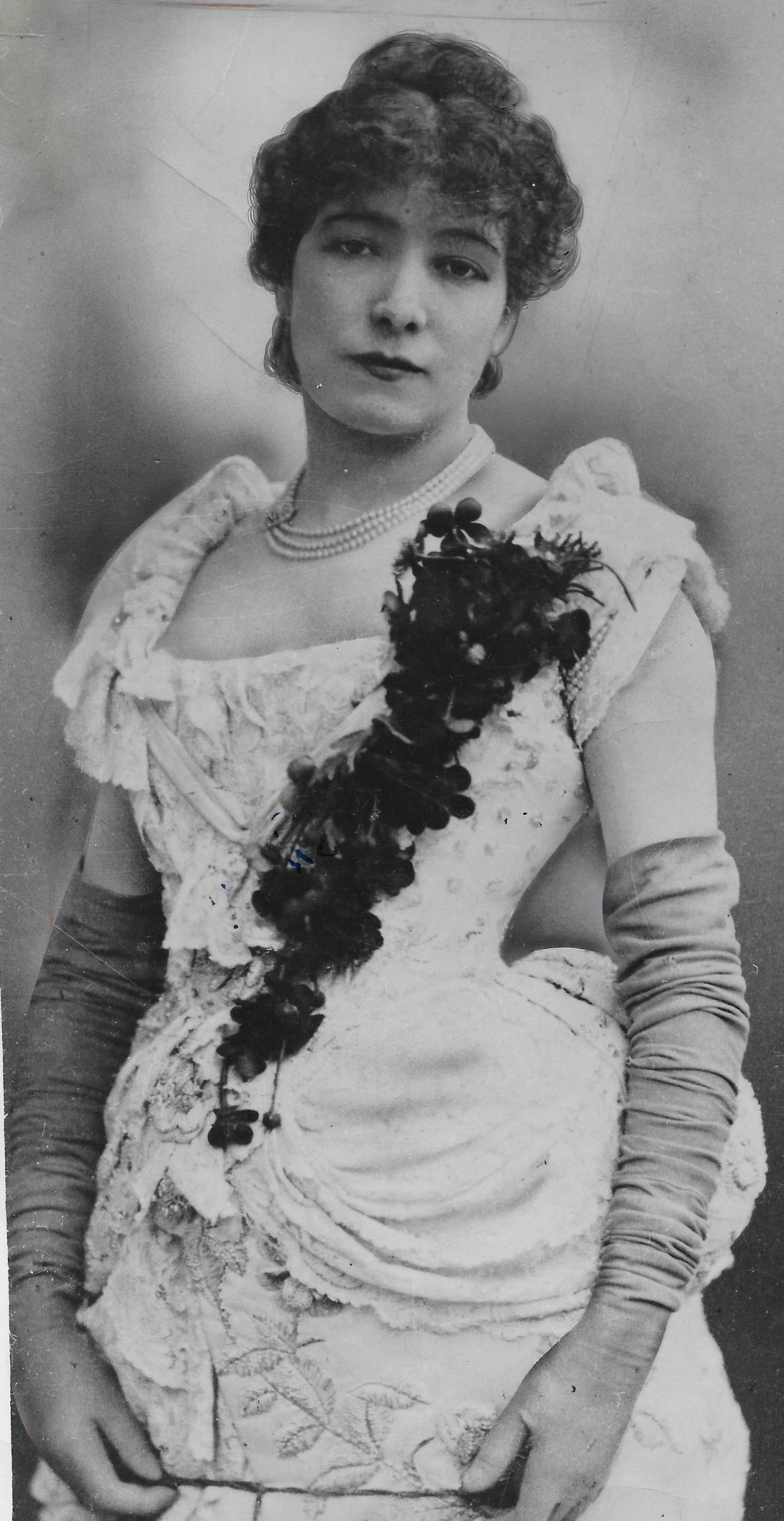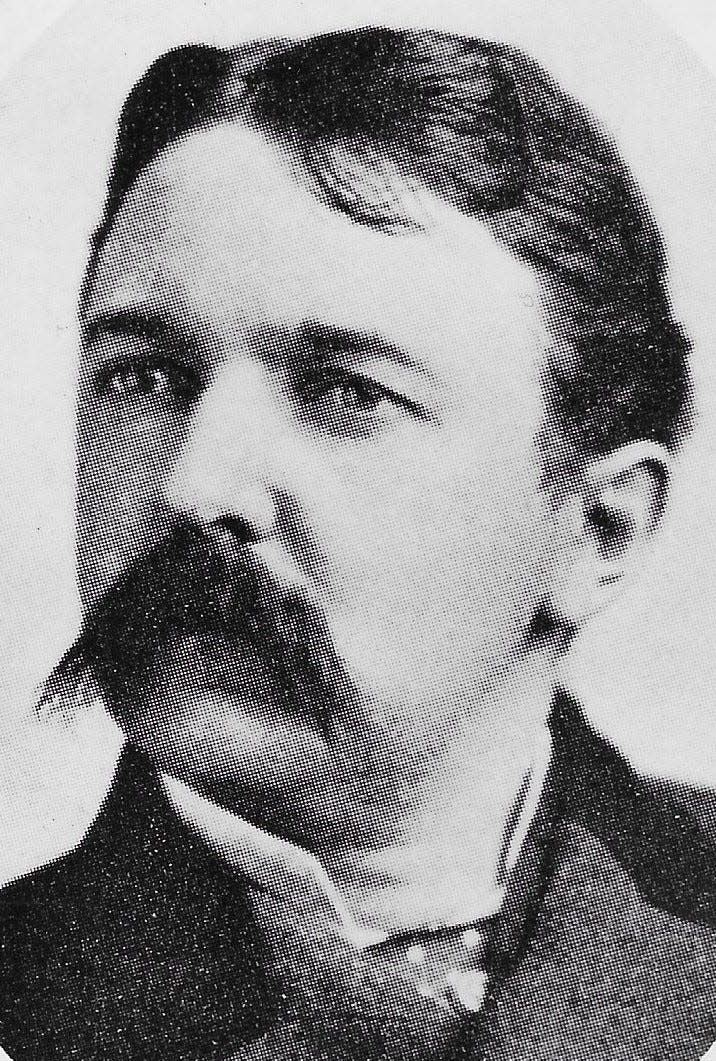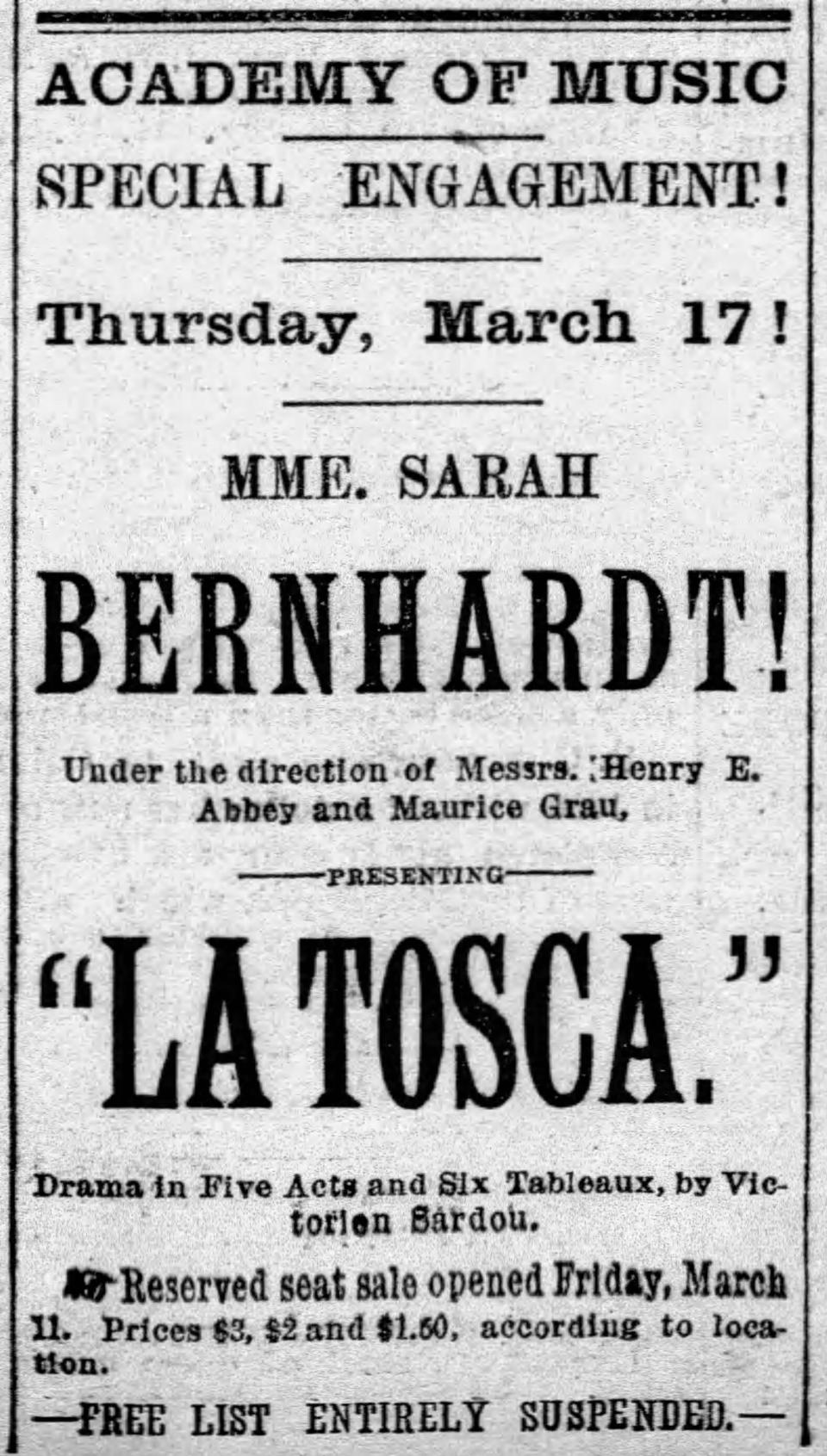Local history: World’s greatest actress graced Akron with her presence

- Oops!Something went wrong.Please try again later.
- Oops!Something went wrong.Please try again later.
She had conquered Paris, London and New York, but she had yet to conquer Akron.
Sarah Bernhardt, the greatest actress in the world, agreed to visit the muddy canal town of nearly 28,000 in 1892 to perform before a crowd of 1,000.
It was the least she could do for a friend.
The 47-year-old French superstar headlined a U.S. tour of “La Tosca,” traveling the country in an eight-car train with a 43-person company, lavish costumes and colorful scenery.
The troupe scheduled a performance March 17 at the Academy of Music on the northeast corner of Main and Market streets in Akron.
“No price is too high to see an attraction of this kind, which is seen only in the larger cities of the country,” the Summit County Beacon noted.
Depending on seat location, tickets cost $1.50, $2 or $3 — the equivalent today of $50, $66 and $100.
“Those who intend to go ought to make themselves familiar with the play, as the Madame speaks entirely in French,” the newspaper suggested.
Victorien Sardou had written the five-act drama for Bernhardt. The tragic play premiered in 1887 in Paris to rave reviews and continued for 200 performances before opening in London in 1888 and New York in 1891.
Akron native managed Met
Akron native Henry Eugene Abbey, manager of the Metropolitan Opera in New York, accompanied Bernhardt on the national tour. They had known each other since her U.S. premiere in 1880 at Broadway’s Booth Theatre, which Abbey then managed.
The son of an Akron jeweler, Abbey enjoyed a meteoric rise in theater. He began his career in 1867 as a ticket seller at the Sumner Opera House on North Howard Street, and within two years was leasing the hall. Abbey served as the Academy of Music’s first manager when it opened in 1871.

He left to operate a theater in Buffalo before moving to New York City, becoming the first manager of The Met in 1883.
For “La Tosca,” Abbey paid Bernhardt $1,000 a performance (about $33,500 today). He nearly canceled the Akron show because of scheduling issues, but Bernhardt knew how much the city meant to him.
She demanded that the play go on as scheduled, even if it meant scrapping a week’s worth of engagements in larger cities.
“Do you know, Madame, we shall not have a hundred people in the house at Akron,” Abbey protested, intentionally downplaying the size of the 1,000-seat theater so a cancellation would be more acceptable.
“No matter. I want to play there, and I’m going to play there,” Bernhardt insisted. “It is your home city, mon cher ami, and I want to show your old friends what you have done for me and what I can do for you. I’ll play ‘La Tosca’ for them and I shall be satisfied if there be not a dollar in the house.”
Abbey arrived in town a day early with his wife, Florence. He talked to theater manager W.G. Robinson, chatted with newspaper reporters, met with old friends and paid a visit to Glendale Cemetery.

Bernhardt’s train chugged into Union Depot the next afternoon. The troupe lugged its costumes and scenery to the academy about four blocks west.
Theatergoers filtered into the auditorium that evening, passing below the beautiful frescoes on the walls and ceiling. They took their places on red-cushioned seats and turned their attention to the 36-foot-wide stage beneath a proscenium arch.
The lights dimmed. A hush fell. The curtain rose.
And there stood “The Divine Sarah.”
Sarah Bernhardt ‘a divine genius’
Graceful and ethereal with expressive blue eyes and curly blond hair, the 5-foot-3 Bernhardt commanded the stage as Floria Tosca, an ill-fated opera singer in Rome. The cast spoke in French, and although few in the crowd could understand, it didn’t matter.
“The acting of Madame Bernhardt was so magnificently natural that the eyes of the audience scarcely left her,” an unnamed Beacon reviewer wrote. “She rose far above the exigencies of language. Every gesture, every glance, every movement of the body, every tap of the delicately slippered foot, was eloquent with meaning.”

Theatergoers were so transfixed “that a clock might almost have been heard to tick in the auditorium,” the reporter noted.
Had the newspaper ever published a more glowing review?
Bernhardt was “a divine genius” whose acting was “a revelation and an education,” the Beacon gushed. The spell she cast was “exquisite in its delicacy, magnificent in the opportunity it affords for the attainment of perfection in dramatic art.”
Enthusiastic applause rocked the Academy of Music at the play’s end. Bernhardt and the cast took their final bows, and the curtain fell.
“The Divine Sarah” had conquered Akron.
She boarded her private train and resumed her tour of large cities.
What happened after Akron play
There are several postscripts.
In 1893, Abbey opened Abbey’s Theatre in New York, later known as the Knickerbocker Theatre on Broadway. He had talked about building a theater in Akron, but it never happened. He died in 1896 at age 50 after a long illness.
A devastating fire gutted the Academy of Music in 1897 as a large crowd watched from the street. S.T. Everett rebuilt the scorched hall in 1898 as a five-story office complex. The Everett Building still stands today at Main and Market streets.
In 1900, Italian composer Giacomo Puccini’s acclaimed opera “Tosca,” an adaptation of “La Tosca,” premiered in Rome.
Sarah Bernhardt made her final U.S. performance in 1918 at B.F. Keith’s Hippodrome in Cleveland in a World War I-era production titled “From the Theatre to the Field of Honor.”
The world’s greatest stage actress died of a blood condition March 26, 1923 — 100 years ago — in Paris at age 78. More than 30,000 attended her funeral. She was laid to rest in a rosewood coffin lined with white satin.
Akron was fortunate to have been graced with her presence.
As the Beacon noted in 1892:
“It is ever Bernhardt in whom we are interested more than in the role she assumes, the artistic refinement and distinctness, the truthfulness, the soulful significance, and the intellectual emphasis of her work, making any character she may choose to represent fascinating as no other actress could make most of the personages of her repertoire.”
Brava, Divine Sarah.
Mark J. Price can be reached at mprice@thebeaconjournal.com.
More:World War II sub found: Officials confirm final resting place of Akron sailor
Local history:Akron runaway balloon caused panic in sky
This article originally appeared on Akron Beacon Journal: World’s greatest actress Sarah Bernhardt graced Akron with presence
